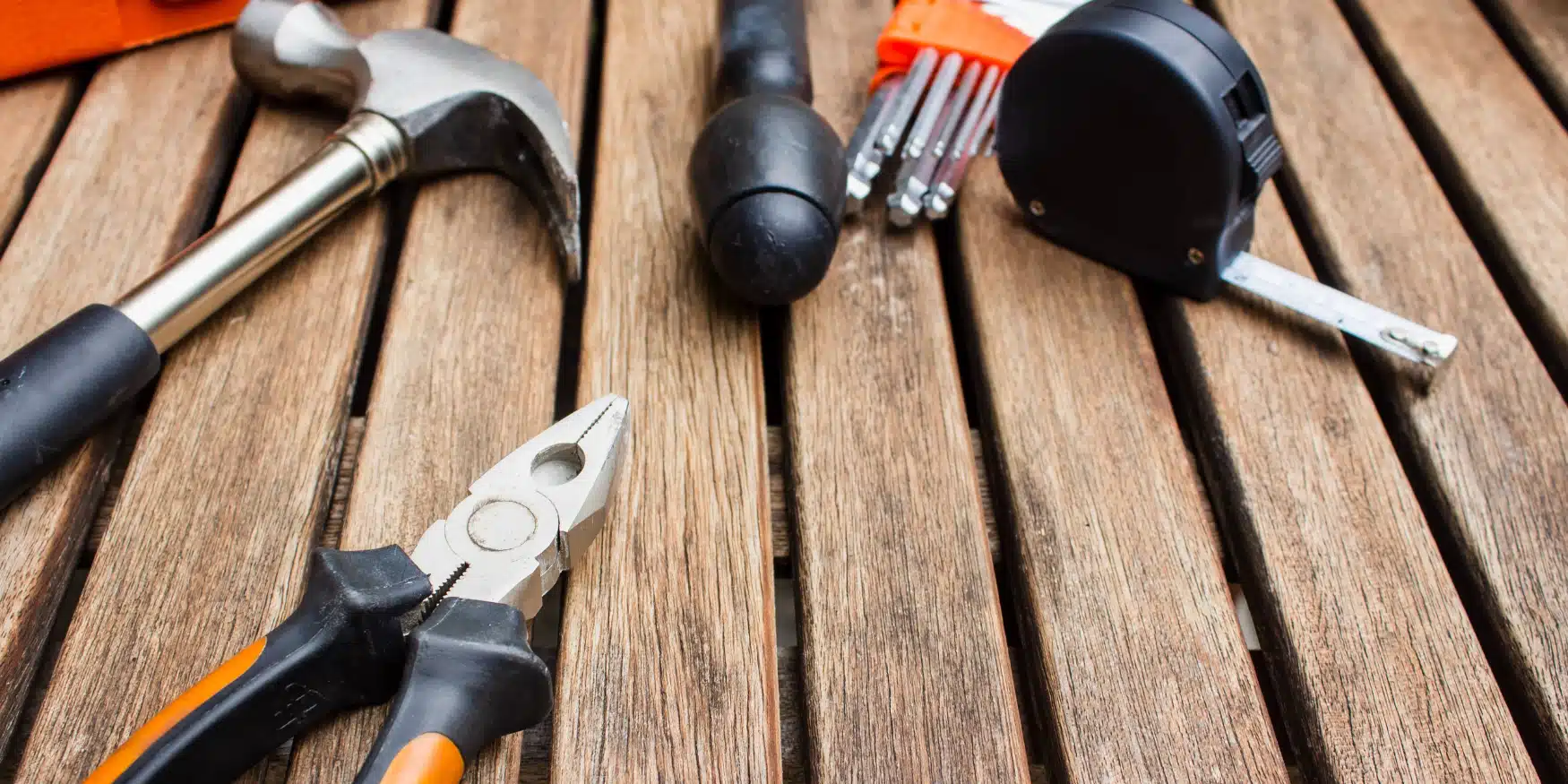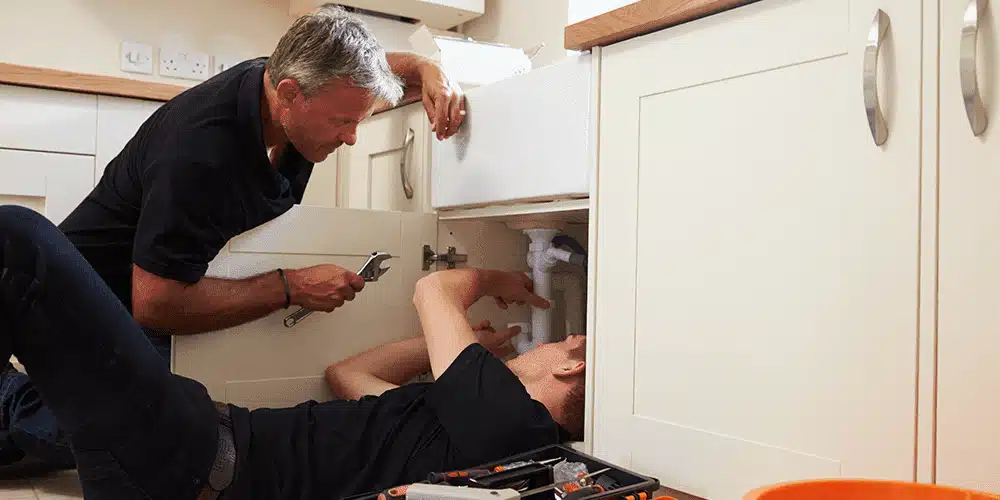Plumbing is a rewarding and essential trade, but it also comes with many risks and challenges.
Plumbers have to deal with hazardous substances, high-pressure systems, hot and cold temperatures, confined spaces, and electrical hazards.
That’s why it’s crucial for plumbers to follow the health and safety requirements and regulations that apply to their work.
In this blog post, we will cover the basics of safety for plumbers, the main regulations that plumbers have to comply with, the safety precautions in plumbing, and the electrical safety tips for plumbers.
We will also discuss who is responsible for providing personal protective equipment (PPE) for plumbers and how Fergus can help you manage your safety compliance.
What are the health and safety requirements for a plumber?
The health and safety requirements for a plumber are the rules and standards that aim to protect the plumber and others from harm, injury, or illness while performing plumbing work.
These requirements may vary depending on the country, state, or region where the plumber operates, but they generally include the following:
- Conducting a risk assessment before starting any plumbing work and taking appropriate measures to eliminate or minimise the risks.
- Following the safe work procedures and instructions for plumbing tasks and using the correct tools and equipment for the job.
- Wearing the appropriate PPE, such as gloves, goggles, boots, helmets, ear plugs, and masks, depending on the type and level of exposure to hazards.
- Reporting any accidents, incidents, injuries, or near misses that occur during plumbing work and cooperating with any investigations or inspections.
- Keeping the work area clean and tidy and disposing of any waste or materials safely and legally.
- Maintaining and updating the skills and knowledge required for plumbing work and attending any relevant training or courses.
What are the 3 main regulations plumbers have to follow?
The 3 main regulations that plumbers have to follow are:
- The Plumbing Regulations. These are the specific rules and standards that govern the plumbing industry and define the scope, qualifications, licensing, registration, and supervision of plumbing work. These regulations may differ from state to state, so plumbers need to check the local requirements and comply with them.
- The Work Health and Safety (WHS) Regulations. These are the general rules and standards that apply to all workplaces and workers and aim to ensure the health and safety of everyone at work. These regulations cover the duties and responsibilities of employers, workers, contractors, and others, as well as the management of hazards, risks, and incidents.
- The Environmental Regulations. These are the rules and standards that protect the environment from pollution and harm caused by human activities, such as plumbing work. These regulations cover the management of water, wastewater, stormwater, gas, and other substances that may affect the quality of the environment.
What are the safety precautions in plumbing?
The safety precautions in plumbing are the actions and measures that plumbers take to prevent or reduce the likelihood of accidents, injuries, or illnesses while performing plumbing work.
Some of the common safety precautions in plumbing are:
- Isolating and locking out any sources of energy, such as electricity, gas, water, or steam, before working on them.
- Testing and verifying that the pipes, fittings, valves, and appliances are safe and functional before and after working on them.
- Using the appropriate tools and equipment for the plumbing task and inspecting them for any defects or damage before and after use.
- Wearing the appropriate PPE and clothing for the plumbing task and ensuring that they are in good condition and fit properly.
- Avoiding contact with any hazardous substances, such as chemicals, asbestos, lead, or sewage, and following the safe handling and disposal procedures for them.
- Working in a well-ventilated and well-lit area and avoiding exposure to extreme temperatures, noise, or vibration.
- Working in a safe and comfortable posture and taking regular breaks to avoid fatigue, strain, or stress.
- Working with a partner or a team and communicating effectively with them and others involved in the plumbing work.
- Being aware of the surroundings and the potential hazards and risks and taking action to avoid or minimise them.
How should a plumber ensure electrical safety while working?
Electrical safety is one of the most important aspects of safety for plumbers, as plumbers often have to work near or with electrical equipment, wires, or circuits.
Electrical hazards can cause electric shocks, burns, fires, or explosions, which can result in serious injuries or fatalities.
Therefore, plumbers should ensure electrical safety while working by:
- Following the electrical regulations and standards that apply to their work and obtaining the necessary permits or approvals for any electrical work.
- Having the appropriate qualifications, skills, and licenses for performing electrical work and working under the supervision of a qualified electrician if required.
- Using the appropriate tools and equipment for electrical work and ensuring that they are insulated, grounded, and tested for safety.
- Wearing the appropriate PPE and clothing for electrical work and ensuring that they are dry, clean, and non-conductive.
- Isolating and locking out any sources of electricity before working on them and verifying that they are de-energised and safe to work on.
- Avoiding contact with any live or exposed wires, cables, or circuits and keeping a safe distance from them.
- Avoiding working on electrical equipment or systems that are wet, damaged, or faulty and reporting any issues or problems to the relevant authorities or persons.
- Avoiding working in wet or damp conditions or near flammable or combustible materials or substances that may increase the risk of electrical hazards.
What are the 5 main electrical hazards?
The 5 main electrical hazards are:
- Electric shock. This is the passage of electric current through the body, which can cause pain, muscle spasms, burns, or cardiac arrest. Electric shock can occur when a person touches a live or exposed wire, cable, or circuit, or when a person becomes part of an electrical circuit.
- Electrical burn. This is the damage to the skin, tissues, or organs caused by the heat generated by electric current. Electrical burn can occur when a person touches a live or exposed wire, cable, or circuit, or when a person is exposed to an electric arc or flash.
- Electrical fire. This is the ignition of flammable or combustible materials or substances by electric current, sparks, or arcs. Electrical fire can occur when a short circuit, overload, or fault causes overheating, arcing, or sparking of electrical equipment, wires, or circuits, or when electrical equipment, wires, or circuits come into contact with flammable or combustible materials or substances.
- Electrical explosion. This is the rapid expansion of gases or vapours caused by electric current, sparks, or arcs. Electrical explosion can occur when a short circuit, overload, or fault causes arcing or sparking of electrical equipment, wires, or circuits, or when electrical equipment, wires, or circuits come into contact with explosive or volatile materials or substances.
- Electrocution. This is the death of a person caused by electric shock, electrical burn, electrical fire, or electrical explosion. Electrocution can occur when a person is exposed to a high voltage or current of electricity, or when a person is unable to escape or be rescued from an electrical hazard.
Who is responsible for providing PPE for plumbers?
PPE is the equipment or clothing that plumbers wear to protect themselves from hazards and risks while performing plumbing work.
PPE may include gloves, goggles, boots, helmets, ear plugs, masks, and other items, depending on the type and level of exposure to hazards.
PPE is essential for ensuring the health and safety of plumbers and preventing or reducing the severity of injuries or illnesses.
The responsibility for providing PPE for plumbers depends on the employment status and arrangement of the plumber.
Generally, there are three scenarios:
- If the plumber is an employee of a plumbing company or business, then the employer is responsible for providing PPE for the plumber. The employer must ensure that the PPE is suitable, adequate, and fit for purpose, and that the plumber is trained and instructed on how to use and maintain the PPE. The employer must also monitor and review the effectiveness and condition of the PPE and replace or repair it as needed.
- If the plumber is a contractor or a subcontractor who works for a plumbing company or business, then the contractor or subcontractor is responsible for providing PPE for themselves. The contractor or subcontractor must ensure that the PPE meets the requirements and standards of the plumbing company or business and the relevant regulations and authorities. The contractor or subcontractor must also ensure that the PPE is suitable, adequate, and fit for purpose, and that they are trained and instructed on how to use and maintain the PPE. The contractor or subcontractor must also monitor and review the effectiveness and condition of the PPE and replace or repair it as needed.
- If the plumber is a self-employed or a sole trader who works for themselves or their own plumbing business, then the plumber is responsible for providing PPE for themselves. The plumber must ensure that the PPE meets the requirements and standards of the clients and the relevant regulations and authorities. The plumber must also ensure that the PPE is suitable, adequate, and fit for purpose, and that they are trained and instructed on how to use and maintain the PPE. The plumber must also monitor and review the effectiveness and condition of the PPE and replace or repair it as needed.
How Fergus can help you manage your safety compliance
Fergus is a cloud-based job management software that helps plumbers and other tradespeople run their businesses more efficiently and effectively.
Fergus can also help you manage your safety compliance and reduce the risks and costs associated with plumbing work.
Here are some of the ways that Fergus can help you with safety for plumbers:
- Create and store digital risk assessments and safe work method statements for each plumbing job and share them with your team and clients. You can also access and update your risk assessments and safe work method statements on the go, using your mobile device.
- Track and record any accidents, incidents, injuries, or near misses that occur during plumbing work and generate reports and notifications for them. You can also use Fergus to attach photos, videos, or documents to your incident reports and send them to the relevant authorities or persons.
- Manage and monitor your PPE inventory and usage and ensure that you and your team have the right PPE for each plumbing task. You can also order, receive, and replenish your PPE supplies and keep track of their expiry dates and condition.
- Maintain and update your skills and qualifications for plumbing work and ensure that you and your team are compliant with the plumbing regulations and standards. You can also schedule and attend any relevant training or courses and keep track of your certificates and licenses.
- Fergus integrates with other tools and platforms that can help you with safety compliance, such as Xero, MYOB, QuickBooks, Google Calendar, and more. You can also sync your data and information across your devices and systems and access them anytime, anywhere.
Fergus is more than just a job management software. It’s a safety management software that can help you stay safe and compliant while performing plumbing work.
With Fergus, you can focus on delivering quality plumbing services to your clients and growing your plumbing business.







